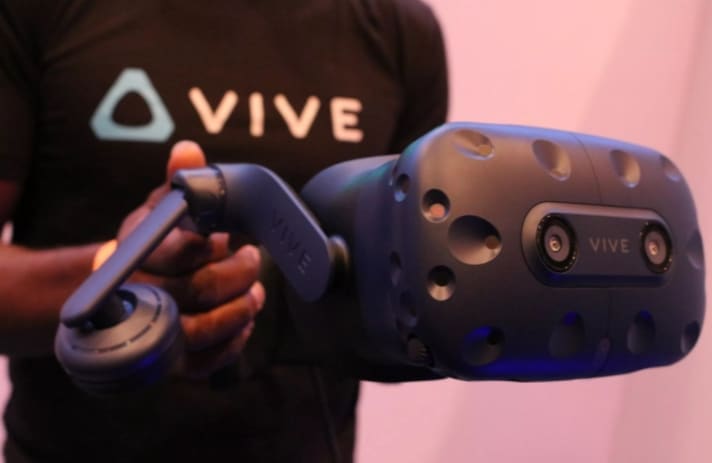
How much would you pay for high-end VR? HTC is betting $799. (UK and AU prices aren’t available yet, but the equivalent is roughly AU$1,040 or £575 converted.) But there’s a catch: This time, that’s only for part of the package.
The HTC Vive Pro, a new PC-connected VR hardware update to the original HTC Vive, was unveiled in January at CES without a price. The Vive Pro’s $799 initial cost seems exactly the same as the original Vive in 2016, but this time it’s without the required controllers and base stations, which cost extra.
HTC is betting on you already having that gear, offering the revamped headset as an upgrade. Or it’s trying to soften the blow of the entire package’s actual cost (each controller is $130 separately, and each base station is $135).
The Vive Pro has a 78 percent bump-up in display resolution (2,800×1,600 or 1,400×1,600 per eye), and a more comfortable headset design with improved headphones.
Other parts of Vive’s proposed VR future are being sold a la carte down the road: new improved base stations allowing a larger range of walkaround full-room tracking, up to 10 by 10 meters, are coming soon for an unknown price. (The original Vive base stations work up to 5 by 5 meters.) And a wireless adapter using Intel’s WiGig tech, will be sold separately by the summer.
According to HTC’s Dan O’ Brien, the Vive Pro is building toward a pro and enterprise market. No numbers were shared, but O’ Brien says Vive has seen aggressive enterprise and professional space growth, at a pace faster than expected.
HTC’s including a six month subscription to VivePort, a subscription service to play VR apps, with Vive Pro (about $42 in value). That helps a bit, but still makes Vive Pro the most expensive VR system currently on the market compared to Oculus, Microsoft’s VR partners, and PlayStation.
Meanwhile, the original Vive is getting a permanent price drop to $499, with controllers, base stations, a two-month subscription to VivePort and Fallout 4 VR all included. That’s a lot more appealing, but Oculus is selling the Rift and Touch controllers with a bunch of free games for $100 less.
I tried the Vive Pro with a handful of games and apps a few months ago, and so did some of my colleagues. The extra display resolution definitely helps for reading text and creating a less-fuzzy VR experience, but it’s still not perfect. Future display resolution increases are still on the horizon and Vive Pro isn’t the final answer for that.
